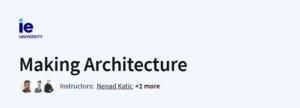What you will learn in UX Design Fundamentals Course
- User-Centered Design: Understand the principles of designing with the user’s needs and experiences at the forefront.
- Information Architecture: Learn how to structure and organize content effectively to enhance user navigation.
- Wireframing and Prototyping: Gain skills in creating wireframes and prototypes to visualize and test design concepts.
- Interaction Design: Explore how users interact with interfaces and how to design intuitive interactions.
- Usability Testing: Learn methods to evaluate and improve the usability of your designs.
Program Overview
Introduction to UX Design
⏳ 2 hours
Overview of UX design principles and the importance of user-centered design.
Information Architecture
⏳ 3 hours
Techniques for organizing and structuring content to improve user navigation.
Wireframing and Prototyping
⏳ 3 hours
Hands-on experience in creating wireframes and prototypes using design tools.
Interaction Design
⏳ 4 hours
Understanding user interactions and designing intuitive interfaces.
Usability Testing
⏳ 4 hours
Methods for testing and refining your designs to ensure usability.
Get certificate
Job Outlook
Career Relevance: This course is beneficial for aspiring UX/UI designers, product designers, and web developers looking to enhance their design skills.
Skill Development: Equips learners with practical skills in UX design, making them competitive candidates in the job market.
Specification: UX Design Fundamentals
|
FAQs
- No prior graphic design or coding experience is required.
- UX design focuses on user experience—research, usability, and problem-solving.
- While UI (visual design) and coding can help, they are not prerequisites.
- The course teaches UX concepts in a beginner-friendly way.
- Curiosity about how people interact with technology is more important than technical skills.
- UX (User Experience) focuses on how a product feels and functions for users.
- UI (User Interface) focuses on the look, style, and visuals of the product.
- Web development focuses on building the product with code.
- UX designers often collaborate with UI designers and developers.
- Understanding the distinction helps clarify career paths.
- UX is in high demand across tech, e-commerce, healthcare, finance, and more.
- Job roles include UX designer, researcher, product designer, and usability analyst.
- Companies value UX because it directly impacts customer satisfaction and retention.
- Entry-level positions are available for beginners, with growth into senior roles.
- Freelance and remote opportunities are also expanding in UX.
- Many UX design tools are free or have free versions, such as Figma, Adobe XD, and Miro.
- Even simple tools like pen and paper are useful for wireframing and prototyping.
- The focus is more on process and problem-solving than expensive software.
- As you progress, you can explore advanced paid tools if needed.
- Employers often care more about your portfolio than the tools you used.
- UX thinking improves product management, marketing, and entrepreneurship.
- It helps in understanding customer needs and behaviors better.
- Even teachers, writers, and business owners can apply UX principles to improve experiences.
- It builds empathy and problem-solving skills that are transferable across careers.
- Knowing UX makes you a stronger collaborator in tech-related projects.





